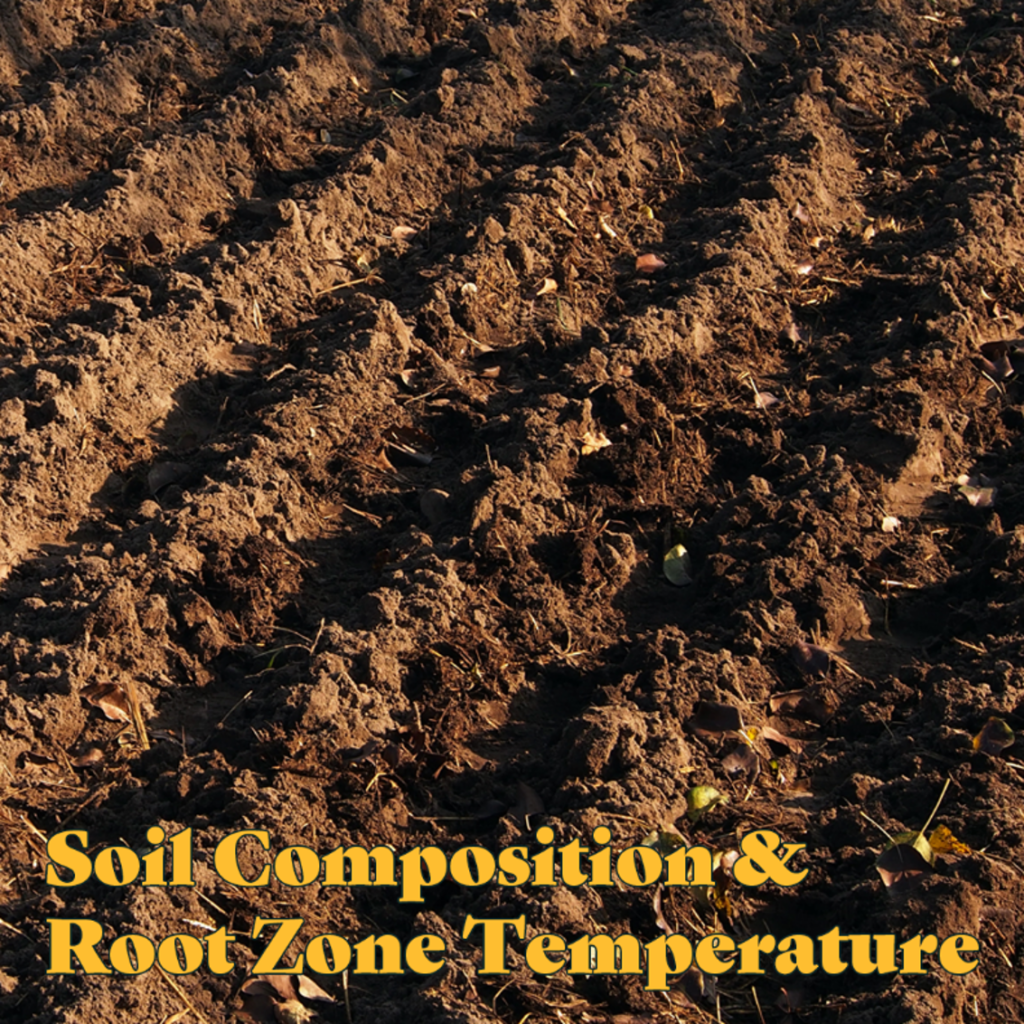
Ideally, your soil should have a balanced consistency: not too moist and not to dry. This will allow the roots to absorb the required amounts of both water and oxygen.
- NPK (nitrogen-phosphorus-potassium) ratios will be listed on your soil bags, you will have to calculate the nutrient changes if you mix bags. If your soil is too wet this could cause plant damage by blocking airflow to the roots. Dry soil may dry out too quickly, starving your roots of moisture. Try to find soil that is loose and feels fine but slightly heavy in your hands.
What is soil made of?
- Soil is composed of living factors like plant material and insect material along with non-living factors like minerals, water, and air.
Why is soil so important?
- The quality of your soil can either enhance or detriment the growth cycle of your cannabis plant, soil provides a place for plant nutrients to be stored and consumed by your plant.
Soil can help regulate the discharge of water helping prevent flooding.
Loam, what is it?
- The ideal blend of soil for plant growth is called “loam”. Loam is a mixture sand-silts, humus and clay. Loam can be easily store-bought as well.
And what about Nutrients?
- The major plant nutrients needed in soil are nitrogen, phosphorus, potassium (NPK for short)
- Nutrients can come premixed in your soil or in a fertilizer liquid or granular. 12:12:12 on your soil bag purchase would be a good base recommendation (12%N 12%P 12%K and the other elements that make up the soil.)
- You can adjust the nutrient level for flowering by adding fertilizers into the soil, eg: during vegetative state more nitrogen will help with production of chlorophyll and during flower.
Tips:
- Healthy soil is the key to producing the best possible Cannabis Plant. Additionally, adding nutrients, monitoring pH, and treating with beneficial bacteria are all things that can amplify your growth process.
- For a less experienced grower, it’s a good idea to start in soil.
- pH (or Potential Hydrogen) is a measure of acidity and alkalinity in the soil – a pH below 7 (= acidic) is ideal for plant growth. Going above 7 (=alkaline) slows down the uptake of phosphorus. Many graphs online show pH scaling and what pH is optimal for nutrient uptakes.
- you can get a pH reader at local gardening store to assist in your measurements.
Nutrients
- the major plant nutrients needed in soil are nitrogen, phosphorus, potassium (NPK for short)
- Nutrients can come premixed in your soil or in a fertilizer liquid or granular.
- 12:12:12 on your soil bag purchase would be a good base recommendation (12%N 12%P 12%K and the other elements that make up the soil.)
- You can adjust the nutrient level for flowering by adding fertilizers into the soil, eg: during vegetative state more nitrogen will help with production of chlorophyll and during flower there is higher consumption of P and K to supply these plants with these elements, it is best to apply a fertilizer solution in that stage.
Know your Root Zone Temperature
- Root zone temperature is critical for growth productivity, and quality in plant physiology. Slightly warmer water temperatures; Upside – slightly faster growth & more robust roots. Downside – can benefit pathogen growth as well.
- Water over 72F degrees (too warm) – the oxygen content of the water is low, warm water that is low in oxygen can lead to an anaerobic environment in the root zone causing a potential for root diseases.
- Water over 82F (way too hot) will potentially reduce potency, extreme cases stop growth.
- Ideal Temperature: 65-67F
- Water below 64F degrees (too cold) – slow growth, constant cold shock can reduce metabolic capacity, reducing overall production.
So what is the ideal temperature?
- Ideal Temperature: 65-68F
- Soil Temperature: Ideal soil temp is 68F. It can fluctuate, but should average 68F for best nutrient uptake.
Happy Roots = Happy Plants!
- The root of the plant absorbs and distributes the nutrients throughout the plant.
- The roots send minerals up through the body of the plant and out to the leaves, which use these nutrients for photosynthesis.
- The root system requires oxygen for aerobic respiration
- Research has proven that if dissolved oxygen levels are higher in the root zone the result will be a higher root mass.





